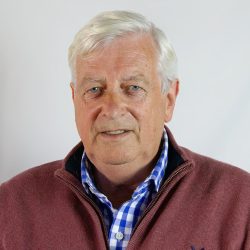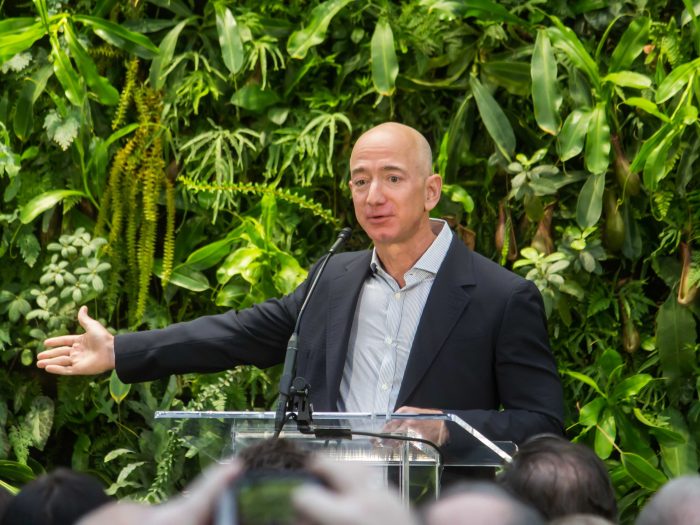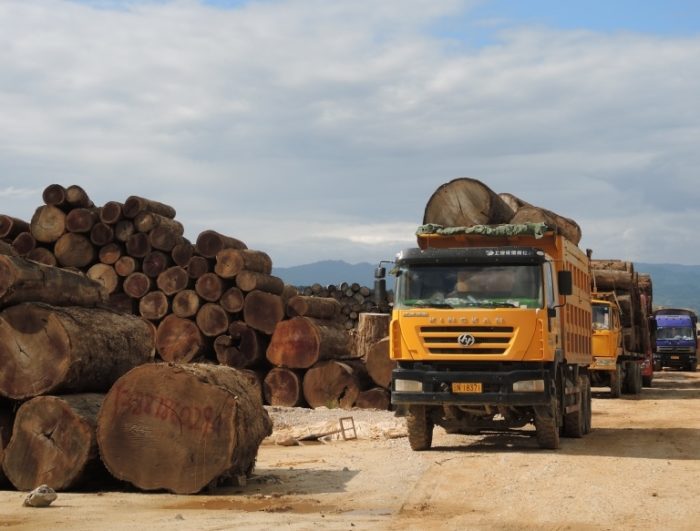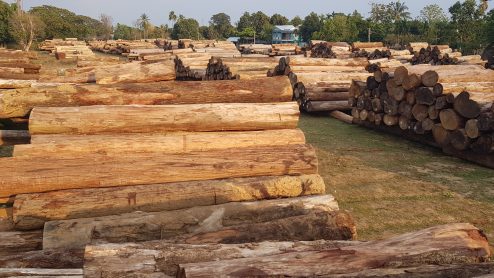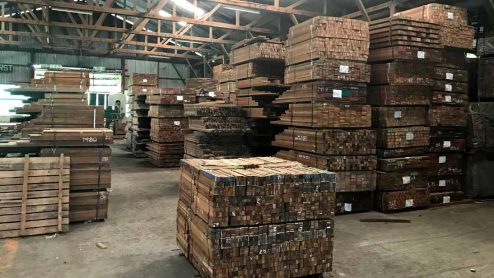Amazon boss needs to clear the decks – is his $500m yacht fitted with Myanmar blood timber?
Following tea with the then Prince of Wales, the king of global retail made an extraordinary announcement on the next stage in his bid to help save the planet.
Jeff Bezos, the founder of Amazon and the second wealthiest man in the world, had already donated $1bn (approx.£805.8m) through his Earth Fund to combat climate change and protect nature.
Now he turned his attention to trees.
At the CoP26 UN climate summit in Glasgow in November 2021, he revealed he would halt deforestation and desertification, not in the rainforest that bore his company’s name, but in Africa by planting 20 million trees across the continent in a project called The Great Green Wall.
Meanwhile, 700 miles away, shrouded in secrecy, he was engaged in another ambitious and hugely expensive project – but there are concerns this one may be connected to massive illegal deforestation, genocide, corruption, the financing of a brutal military dictatorship and circumventing EU law.
How?
Well, three years earlier, Bezos commissioned Oceanco, in Rotterdam, the Netherlands, to build him the largest sailing vessel in the world at a reported cost of $500m (almost £403m).

Jeff Bezos’ teak-decked yacht the Koru (c) Guy Fleury
It was codenamed Y721, a 127m long mega yacht with an aluminium and steel hull and three gigantic masts making the vessel half the height of the Great Pyramid of Giza. No expense was spared and it was literally bedecked from bow to stern in undeniably beautiful teak.
Teak is highly prized in luxury yacht building for its durability, water-repellent properties and elegant appearance. And as the best teak on Earth is found in Myanmar (formerly known as Burma), it may be assumed that it will have been used for the acres of decking on Bezos’s yacht, although neither he nor Oceanco have confirmed it.
EIA’s repeated enquiries to all involved in the construction and fitting out of Bezos’s new toy – which has guest accommodation for 18 and a crew of 36, plus its own 247ft support tender with a helipad and mini-submarine – have been met with stony silence.
That’s because teak, especially Myanmar teak, is a very controversial choice for a European yacht builder, especially one seeking to source the finest materials for a client burnishing his environmental credentials.
Since 2013, the European Union has taken a particularly tough stance on imports of teak from Myanmar by member states, fearing it had been illegally harvested. Five years later, it adopted the ‘common position’ that it is impossible to guarantee that timber from Myanmar had been felled legally due to failings in documenting the chain of custody.
The EU Timber Regulation (EUTR) requires due diligence by importers to trace timber from the moment a tree is cut down through to importation by another country. This is not possible in Myanmar so any timber imports from that country are in violation of the law.
Where then did Oceanco, owned by Mohammed Al Barwani, an Omani billionaire with business interests in fossil fuels and mining, get its teak for Y721? And when? The yacht builder has been reluctant to be totally transparent on the issue.
However, when asked by US environmental digital news platform Mongabay, a spokesperson said: “At Oceanco, we ensure all teak used on our projects meets the EUTR-order 995/2010, which is verified by third-party verification to ensure due diligence.”
He cited Double Helix Tracking Technologies as the company used for verification.
Double Helix is an interesting outfit based in Singapore. It claims to use a unique process and genetic mapping to pinpoint where a tree originated right down to the precise forest to prove it was legally felled.
“Double Helix claims that it can reliably identify the exact place of harvest of timber by using DNA analysis,” stated the EUTR Expert Panel on Myanmar Teak in December 2020.
“However, neither this nor other methodologies used to identify the region in which timber was harvested can reliably exclude that the timber tested was harvested from within or outside specific forest harvesting or conflict areas, as the possibility of attribution is limited to the country and some areas could not be sampled.”
As EU experts concluded: ‘This method can therefore not help exclude that timber comes from a conflict area or was harvested in another district than foreseen.”
In June 2022, the expert group cast further doubt on Double Helix’s ability to verify the origin of teak from Myanmar. It noted that despite the Myanmar Forest Certification Committee (MFCC) recognising Double Helix as an independent verification body, it is ”… unlikely to guarantee independent verifiability of the legality of the harvest and the traceability throughout the supply chain, due to a system shortcoming in the recognition process.“
In other words, in the view of the EU, it was inconceivable. So, it is down to the Dutch competent authorities if they intend to uphold the law to investigate whether the yacht’s decking is Myanmar teak and, if it is, how it ended up in Holland.
The level of deforestation in Myanmar is cataclysmic – it has lost tree cover in an area roughly the size of Switzerland since 2001, according to data from Global Forest Watch, and EIA estimates that if it continues at its current rate, the country’s forests will disappear by 2035.
The State-owned Myanmar Timber Enterprise (MTE) has always maintained that the wood it exports is legal and sustainable, often comes from old stockpiles and complies with annual felling quotas. MTE, which is rife with corruption, is a monopoly controlling all aspects of the harvesting, processing, marketing and export of the country’s teak.
It is not just the importation of the so-called ‘king of woods’ into Holland, whether legal or illicit, that is casting an ugly shadow across the decks and impressive bowsprit of the Bezos mega yacht.
Myanmar teak has now been labelled ‘blood timber’ following the country’s genocide against the Rohingya and a brutal coup d’état by the military in February 2021. To date, the military has killed an estimated 3,463 people, including 363 children, in response to pro-democracy movements. A further 21,879 people have been arrested and 154 sentenced to death.
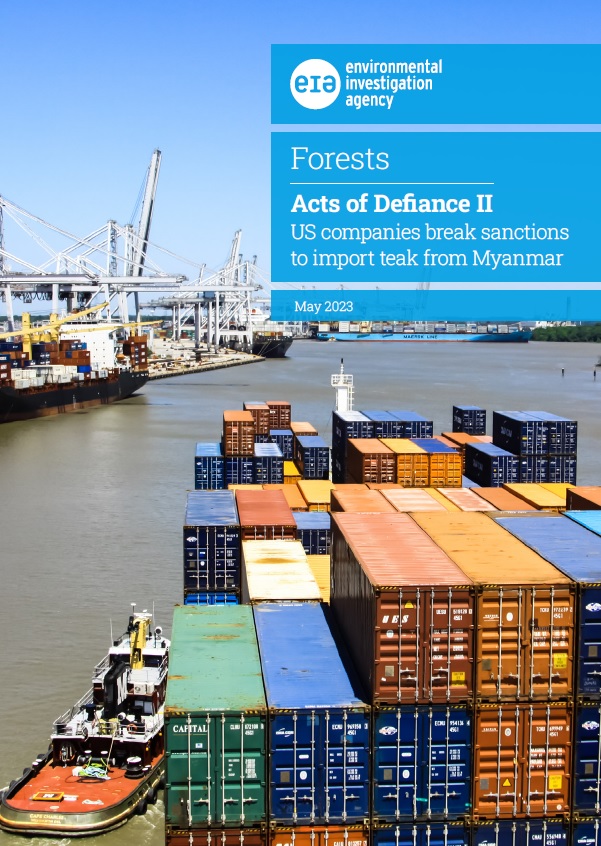 Immediately after the coup, the junta seized control of MTE and has been using profits from the auction of the country’s precious and dwindling ‘blood timber’ to fill its coffers ever since – all while indigenous peoples in Myanmar are still subjected to illegal land grabs by loggers and suffer other human rights abuses.
Immediately after the coup, the junta seized control of MTE and has been using profits from the auction of the country’s precious and dwindling ‘blood timber’ to fill its coffers ever since – all while indigenous peoples in Myanmar are still subjected to illegal land grabs by loggers and suffer other human rights abuses.
At the same time, as EIA recently revealed, vast amounts of teak are being imported into Bezos’s homeland despite the US Lacey Act 2018, which constitutes the world’s first ban on trade in illegally sourced wood products. Following the coup, the Biden administration imposed sanctions on companies such as MTE and some of the ruling generals for their appalling human rights record. The EU, Canada and the UK did likewise.
None of this is a good look for a man who wants to look good.
Bezos once proclaimed, with trees in mind: “We simply can’t address climate change without reversing the loss of nature and vice versa.”
So, perhaps he could set an example and use his unique position and fabulous wealth to speak out against Myanmar’s brutal junta and illegal logging in the country?
It would involve him embracing ‘Koru’, the Māori word for ‘new beginnings, life and hope’ – but, after all, that is what he’s named his yacht.


